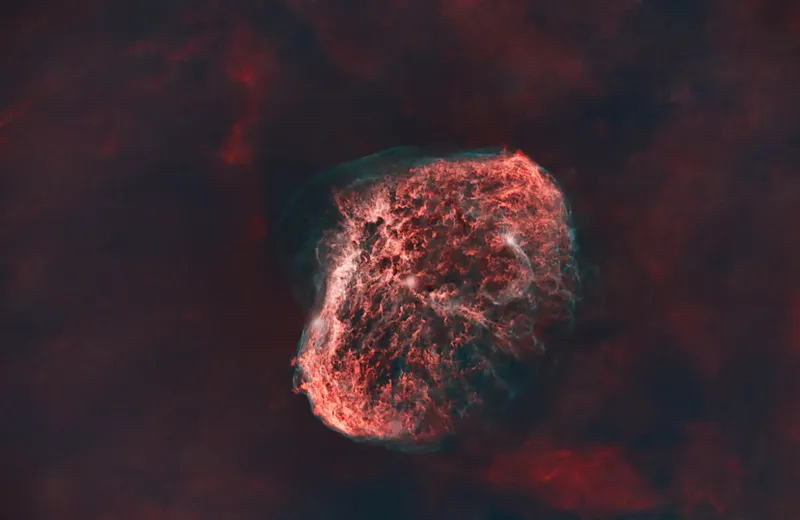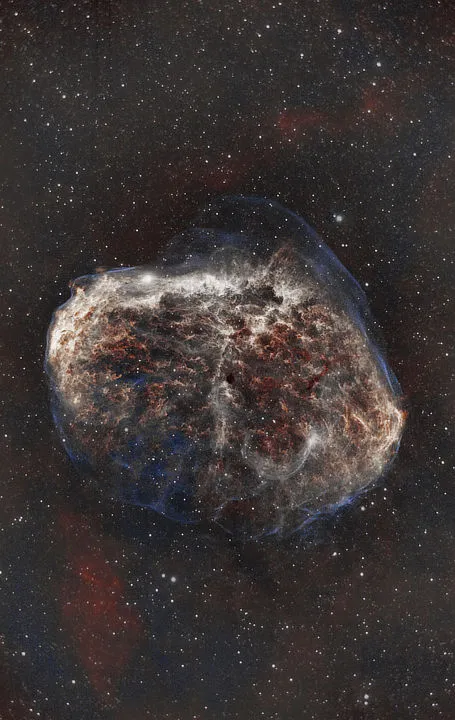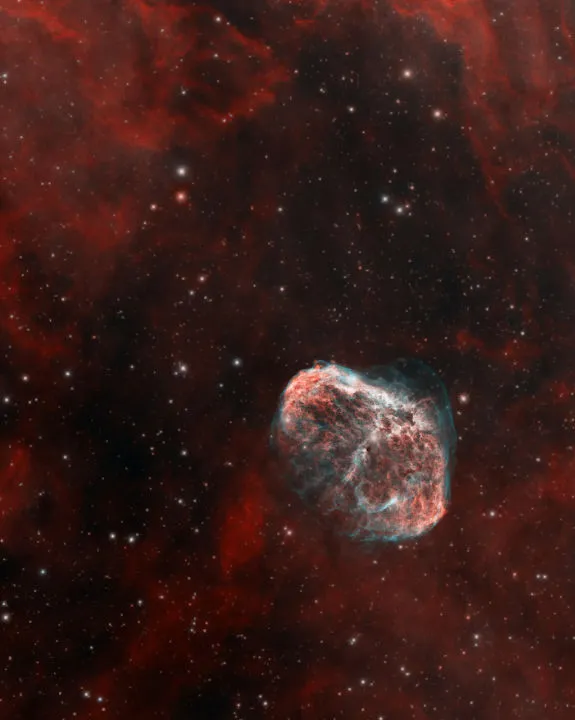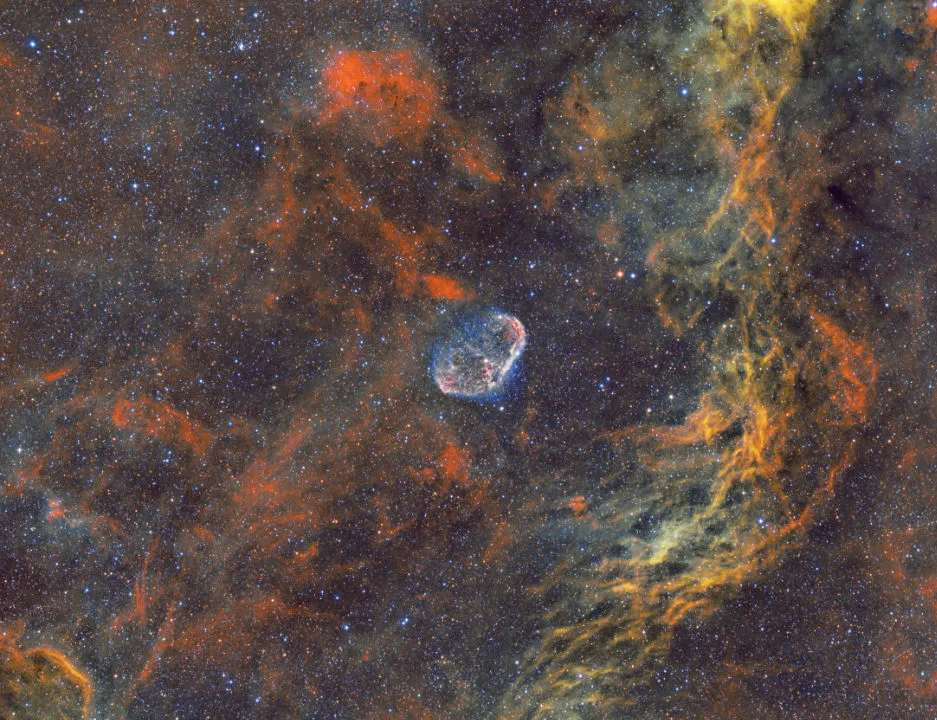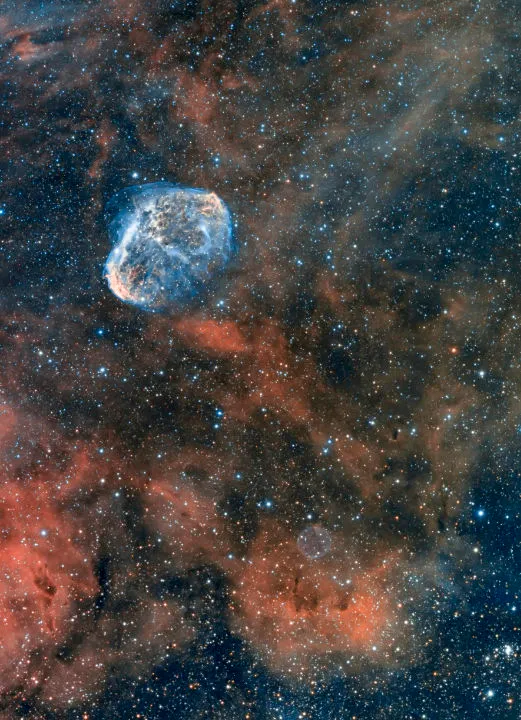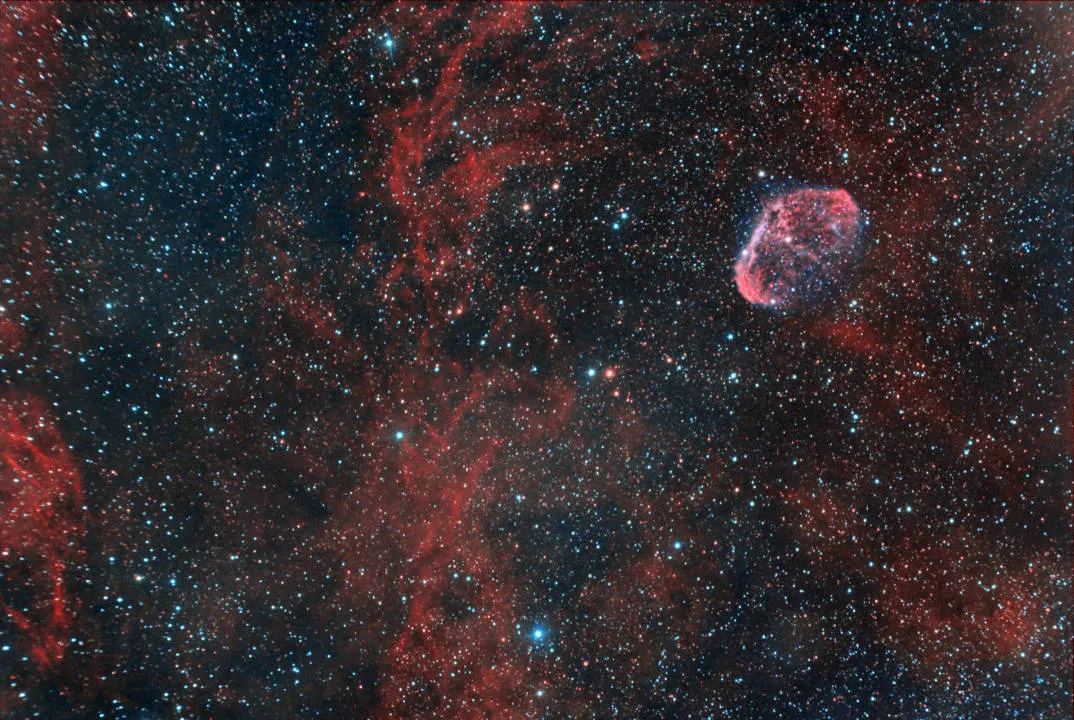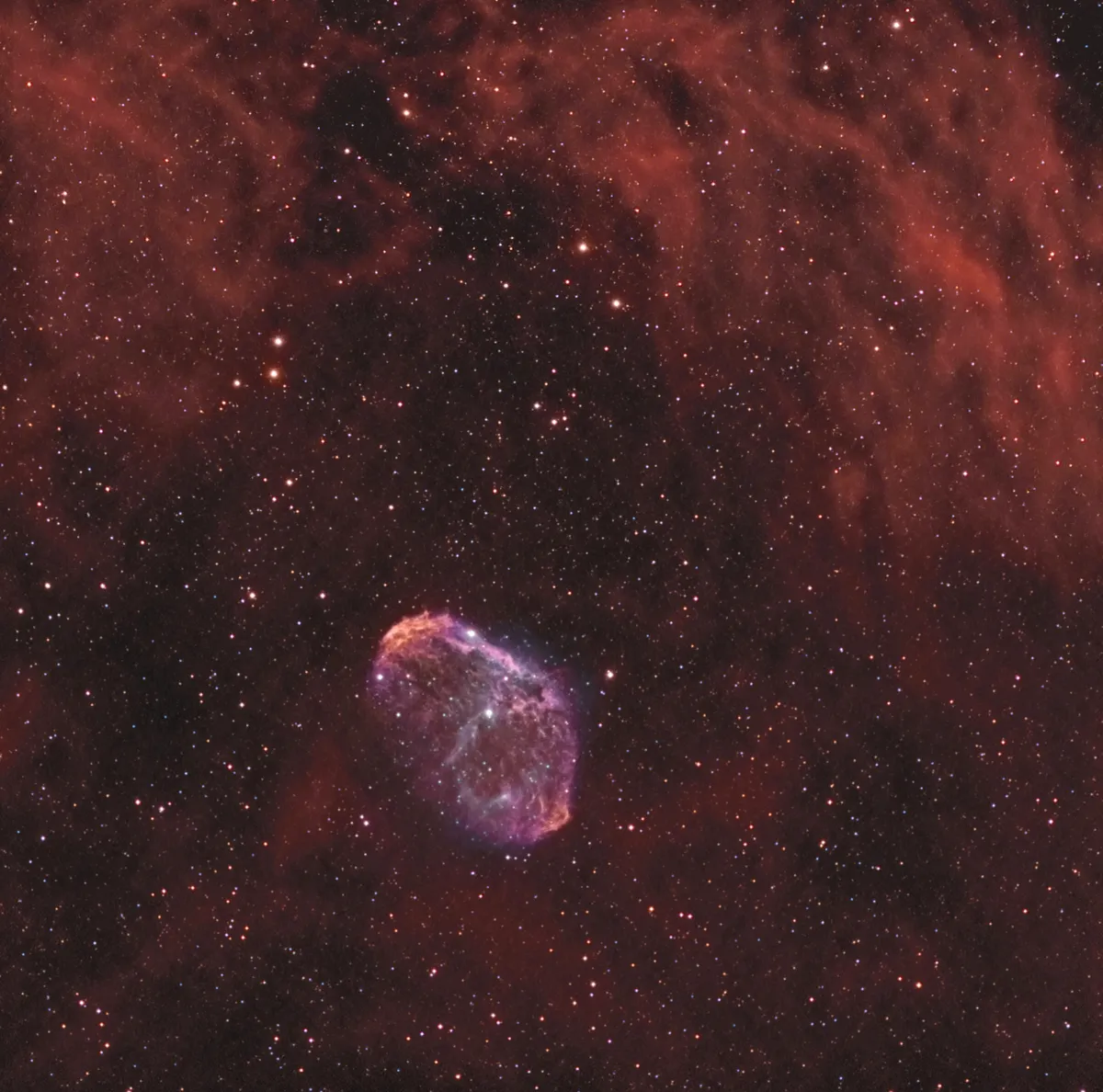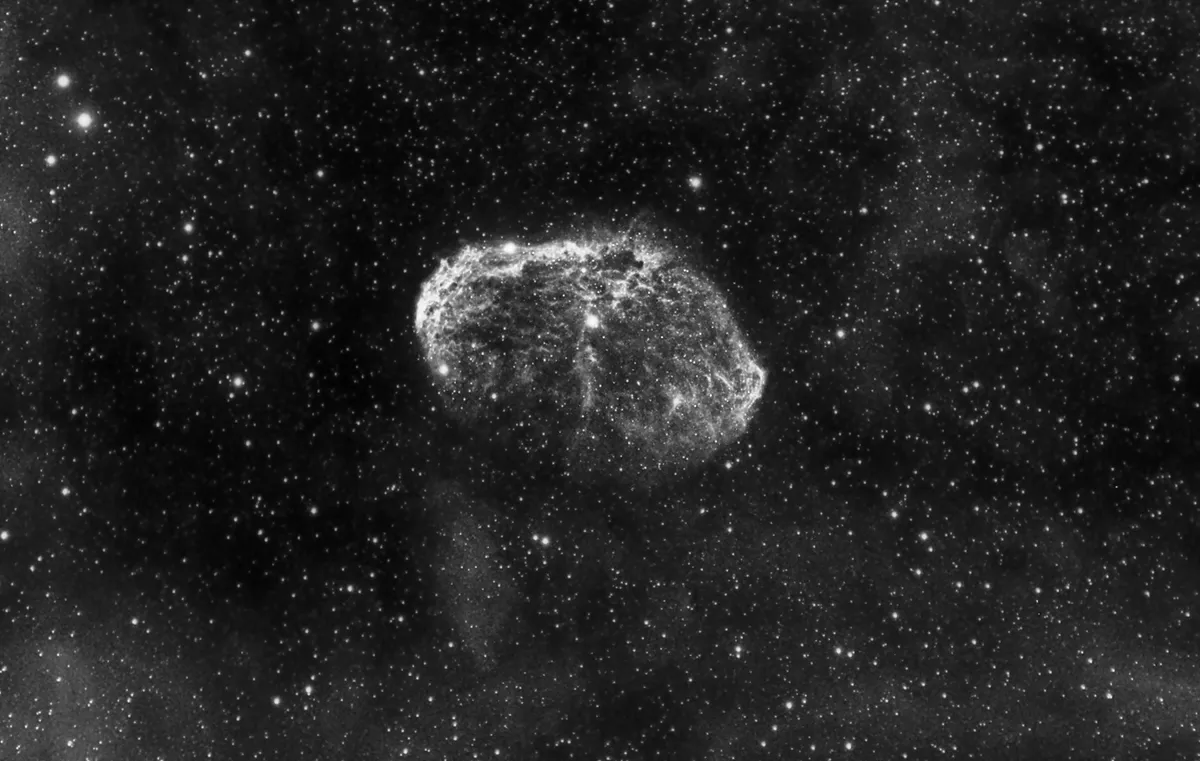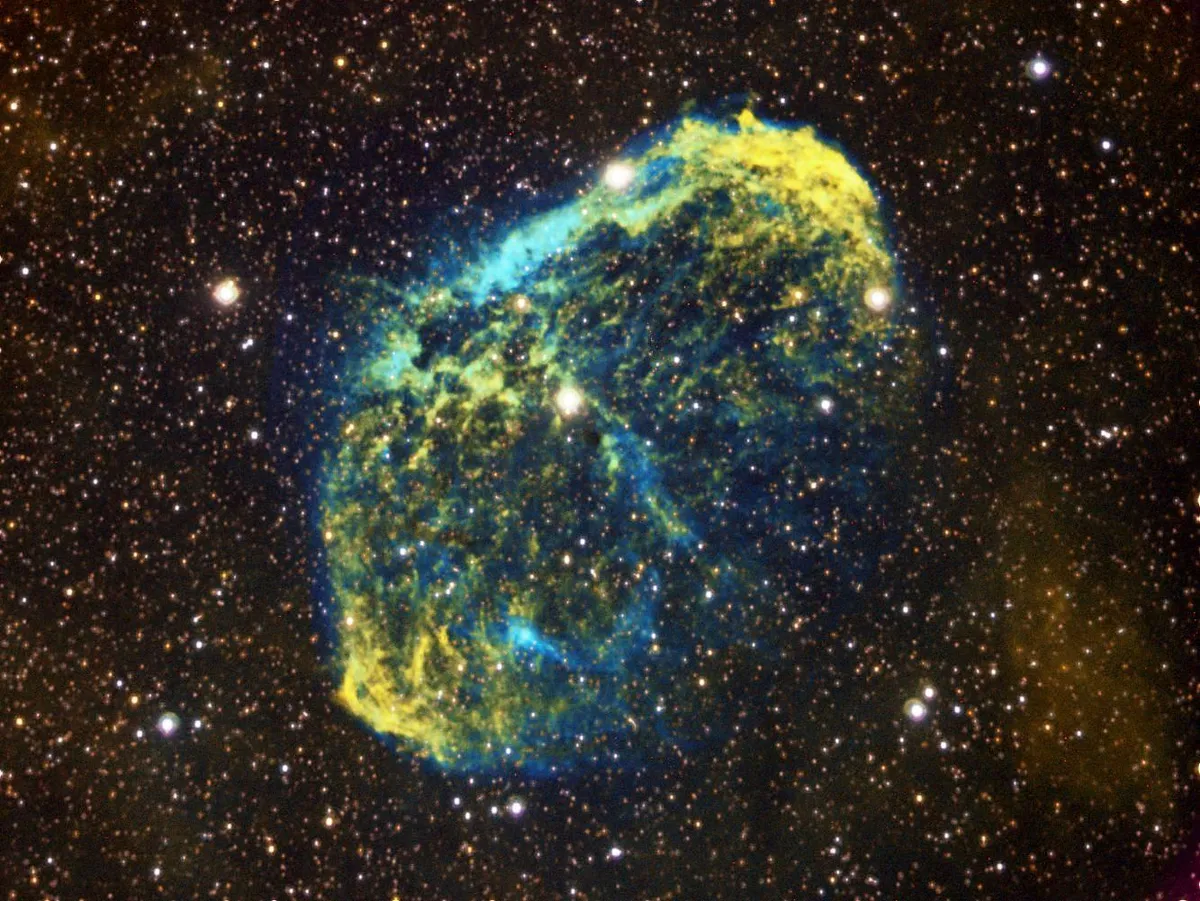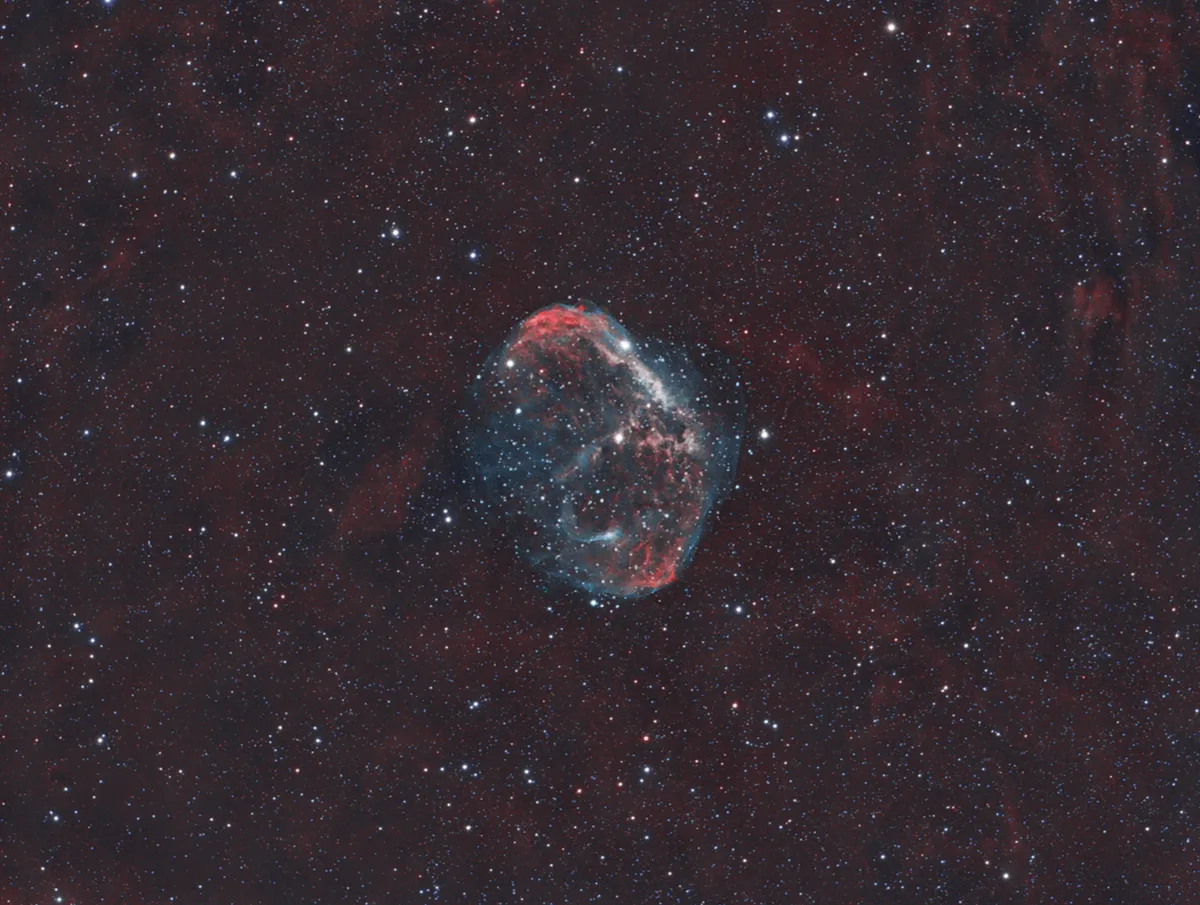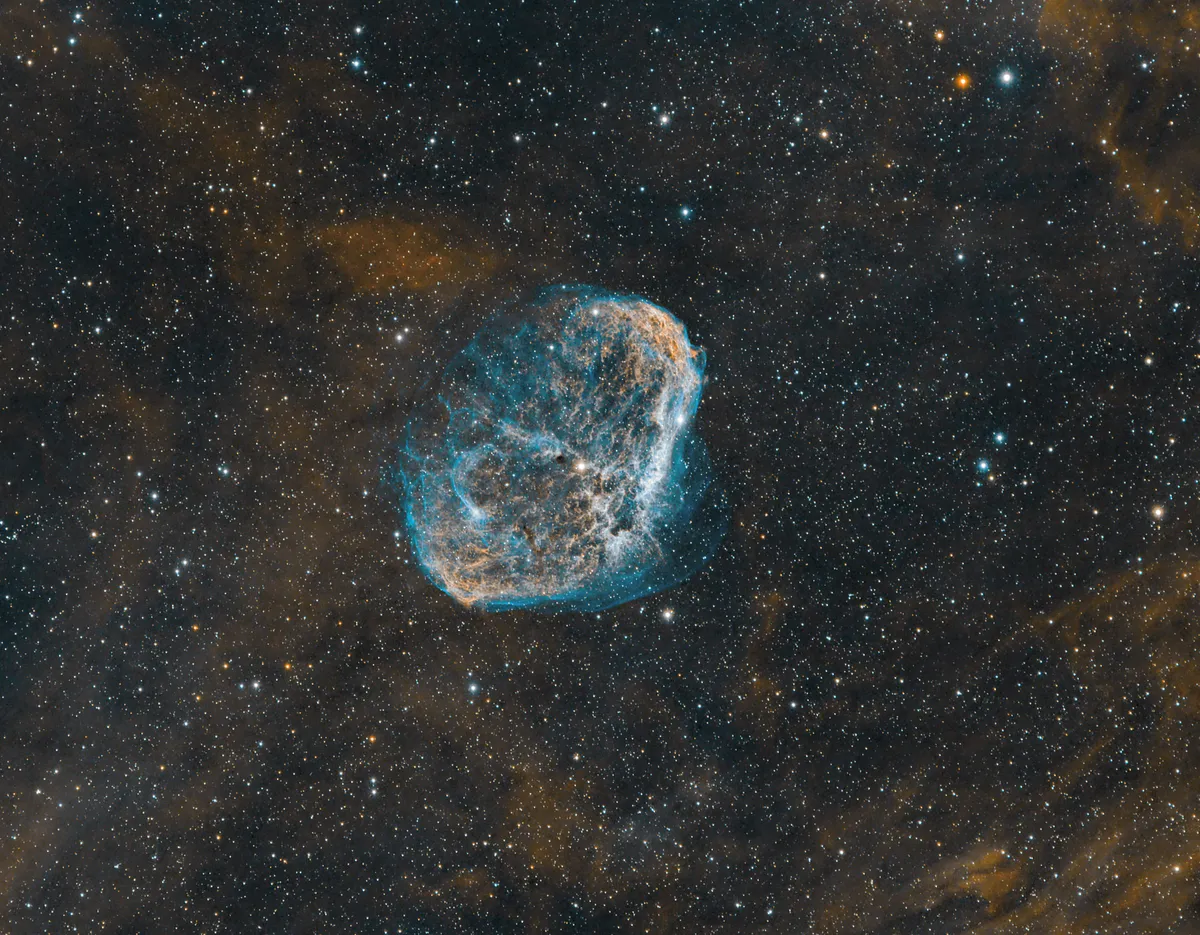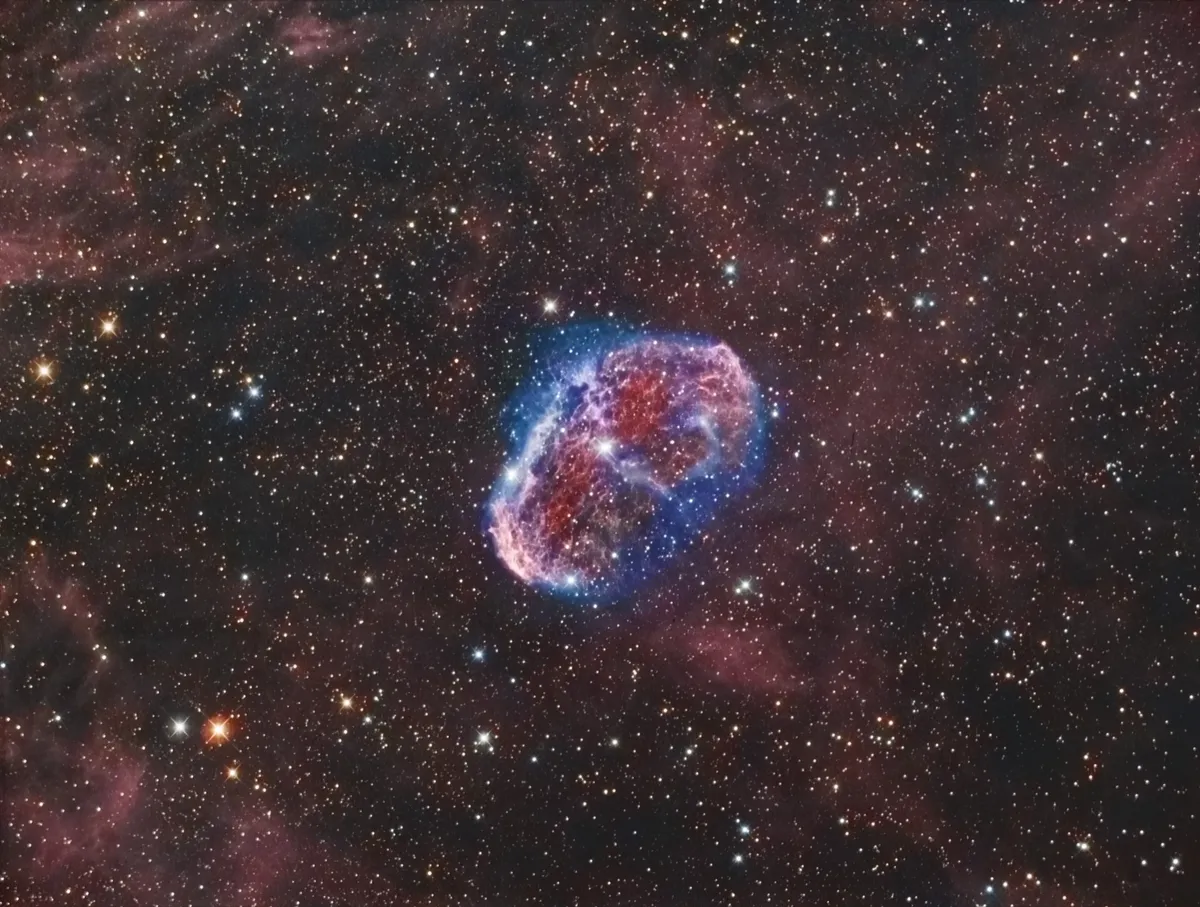The Crescent Nebula, or NGC 6888 as it is formally known, is a distinctive emission nebula that stretches about 25 lightyears across and is located about 5,000 lightyears away from Earth in the Cygnus constellation.
Before we explain what the Crescent Nebula – also known as Caldwell 27 and Sharpless 105 is, we should perhaps start by pointing out what it isn’t… which is crescent-shaped!
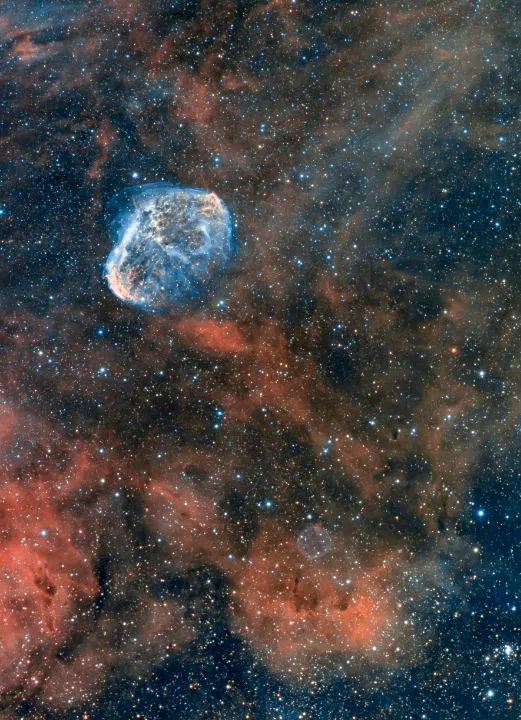
There’s a reason the nebula has that name, though – and it has to do with the vast strides that have been made in telescope technology since William Herschel first observed the Crescent Nebula in September 1792.
Herschel described what he saw as a double star, but noted too that there was "a faint, milky ray joining to it".
Improvements in technology then led to the discovery that this milky ray wrapped around two sides of the 'star', which is when the nebula was given its ‘crescent’ soubriquet.
But as time went on and telescopes further improved, astronomers realised the apparent crescent was just a small portion of the larger-scale, oval structure we see in contemporary images of the nebula.

What causes the Crescent Nebula
What Herschel had thought was a double star was actually a Wolf-Rayet star, which are the hottest stars in the Universe.
The one at the heart of the Crescent Nebula is called WR 136. This star is 5.1 times larger than the Sun, nearly 10 times hotter, 21 times as massive and a whopping 60,000 times brighter!
And it’s WR 136 that caused the nebula to form.
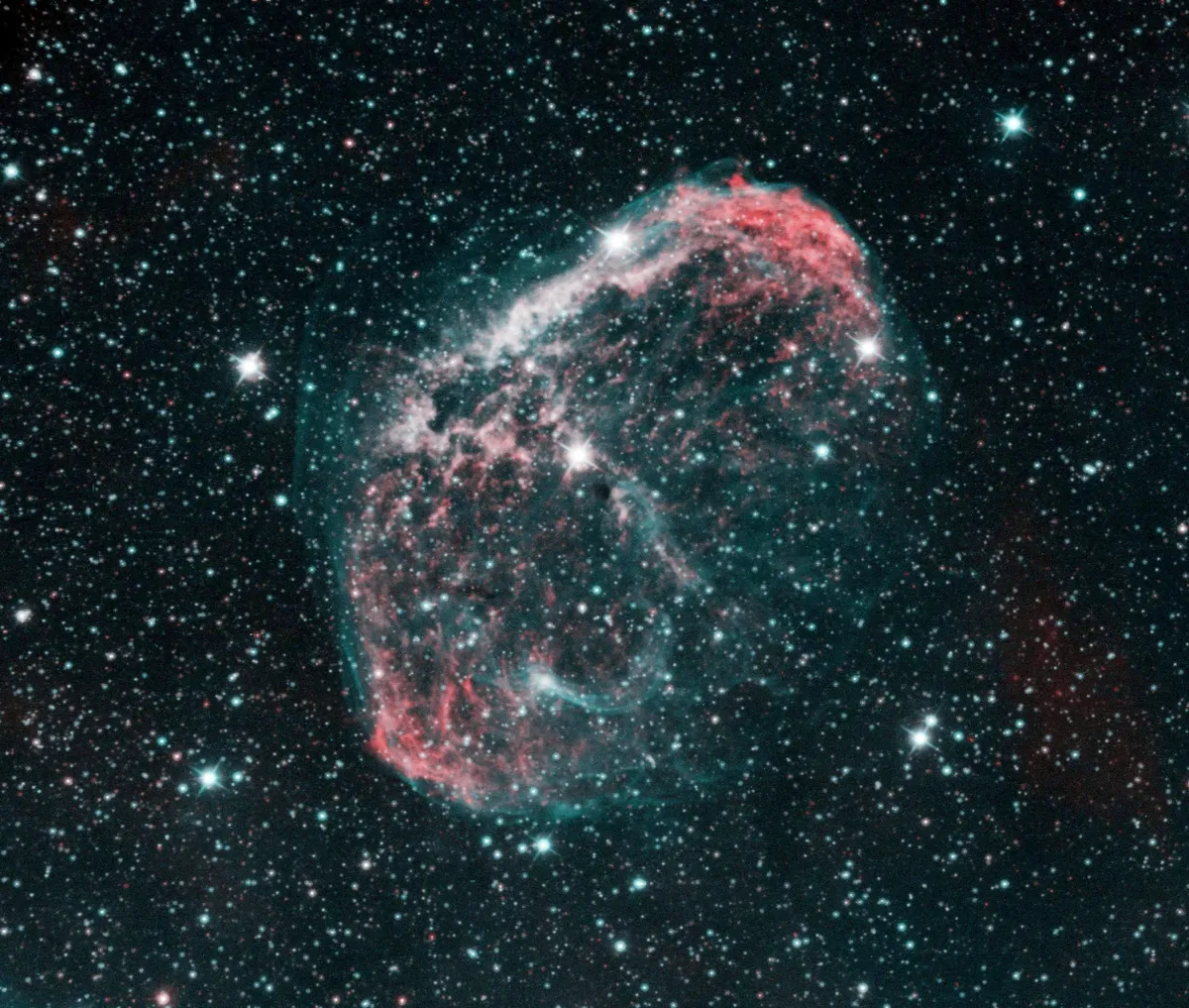
Some time between 120,000 and 240,000 years ago, WR 136 entered its red supergiant phase, at which time it ejected around five solar masses’ worth of material that’s still moving away from the star at a rate of 80km/s (50 miles/second).
But the solar wind that is emitted by WR 136 in its current state moves much faster than that: around 1,700km/s (1,056 miles/second).
When this wind crashes into the older, slower-moving material, it effectively bounces off it, creating an inward-moving shockwave that heats the stellar wind to X-ray emitting temperatures, giving the nebula its glow
As the Crescent Nebula gives off light that comes from a star at its heart, it is classed as an emission nebula – as opposed to a reflection nebula, which merely reflects light from nearby stars, a dark nebula, which emits no light at all, or a supernova remnant.
Observing the Crescent Nebula
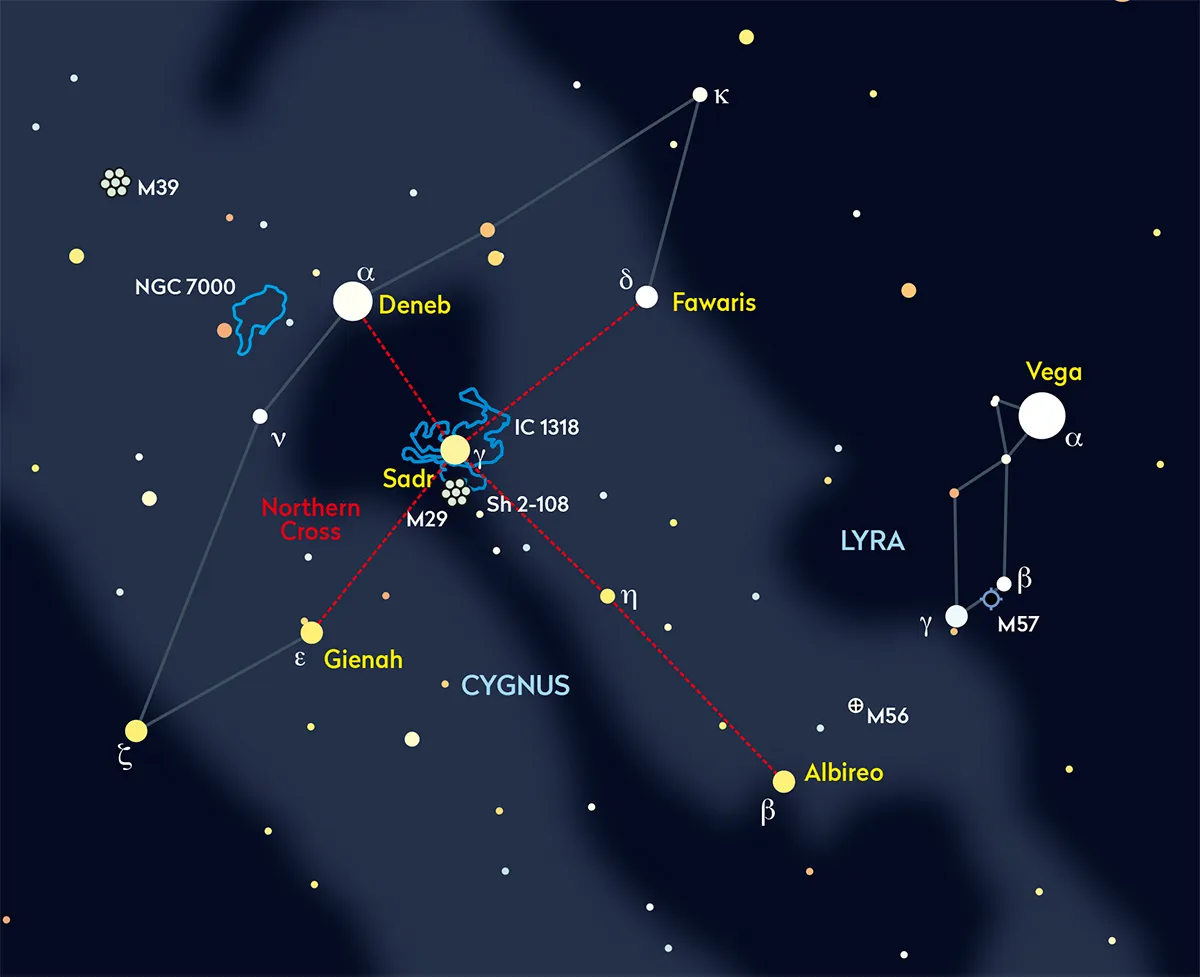
If you want to see the Crescent Nebula for yourself, a telescope with an aperture of at least 20cm (8in) and a UHC or OIII filter are recommended. Locate Sadr – the bright star which sits right on the 'junction' of the Northern Cross asterism in the constellation of Cygnus – and the Crescent Nebula can be found lying some two degrees to the southwest.

Bill Brooks, Leicester, UK, 9 and 13 October 2023
Equipment: ZWO ASI533MC Pro CMOS camera, Orion Optics 200m f/6 Newtonian, Sky-Watcher HEQ5 Pro mount
It is thought that the star at the centre of the Crescent Nebula - known as WR 136 - will eventually end its life in a dramatic stellar explosion known as a supernova.
It is also known as Caldwell 27, a member of the famous Caldwell Catalogue conceived by Sir Patrick Moore.
Images
Below is a selection of images of the Crescent Nebula captured by BBC Sky at Night Magazine readers and astrophotographers from around the world.
If you'd like to get into capturing images of the night sky yourself, find out more about astrophotography with our astrophotography guides, or discover our pick of the best cameras for astrophotography.
And if you'd like to submit your images, find out how to send us your astrophotos or share them with us via Facebook, Twitter and Instagram.

